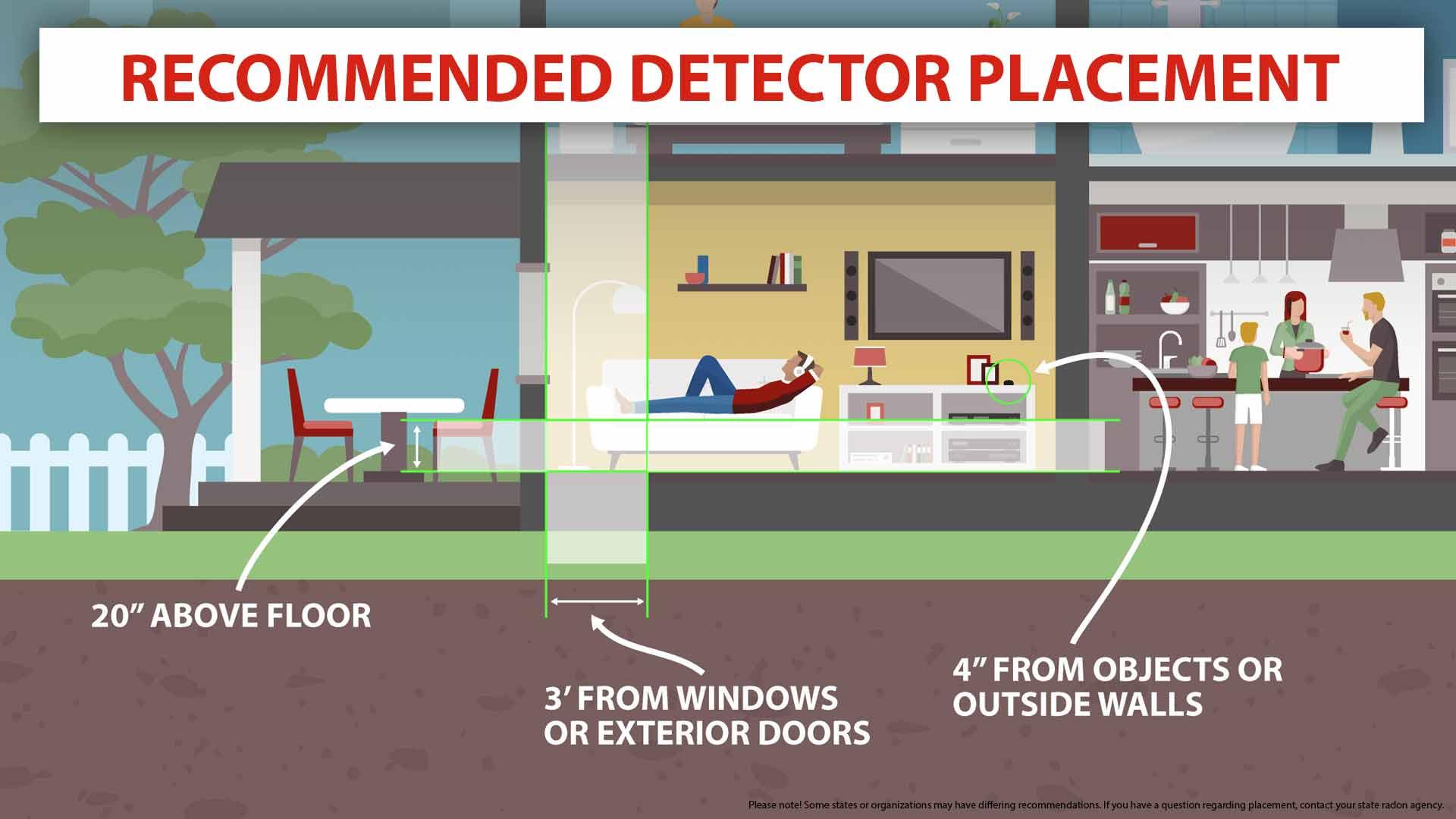How to Test for Radon
Radon is a naturally occurring gas that can be found in varying amounts everywhere, including inside your home. Long-term exposure, at higher than average levels, may increase your risk of lung cancer. The key to protecting yourself and your family from this elevated risk is to regularly monitor your home for radon gas accumulation. While you can hire someone to come test the levels for you, Radonova offers Radtrak³ and Rapidos testing kits and QuickScreen screening detectors so that you can easily learn how to test for radon in your own home.
How To Test For Radon Gas and How It Affects You
Radon is a gas produced as uranium is broken down naturally within the dirt that is around and under your home. It has no taste and you can't smell it. If a home is built on ground that has an excessive amount of uranium in the soil, the concentration of the gas that makes it into your home may be much higher than normal. Radon leeches upward through the soil and can make entry into a home through small cracks, gaps in the cement, spaces near pipes or pumps, and construction joints.
In most cases, you will not feel any outward effects if you are exposed to radon gas. Extended exposure may lead to an increase in upper respiratory illnesses, allergies, chronic breathing problems, and possibly, lung cancer. If you believe you have been exposed to higher than recommended levels of radon gas, visit your doctor as soon as possible.
How Radon Affects You
Those who may be more vulnerable to the effects of radon gas are those with a suppressed immune system and children. If you are unsure of whether or not you may be vulnerable to prolonged exposure to even small amounts of radon gas, talk to your doctor. You may also want to consider putting radon detectors throughout your home to find out if the level of the gas is within a normal range.
How to Test for Radon Gas in Your Home
The only way to know if the amount of radon gas in your home is dangerous is to test for it. Once you know what your levels are, steps can be taken to reduce the gas with proper mitigation. You can hire a company to test for radon or you have the option to use our certified, do-it-yourself test kits. Radonova offers several do-it-yourself test kits that are both accurate and reliable. When properly used, you will be able to learn how much radon is in your home.
The type of radon test kit you purchase will depend on how they are set up in your home and the time in which you need the results. In most cases, you will place a radon detector in two or three places on each floor of your home. The detectors should be placed in areas where they will be able to pick up the radon gas levels. Both short-term and long-term radon detectors and screening tools are available. Short-term detectors and screenings offer a much quicker response time and will provide answers in a few days instead of weeks.
At Radonova, if you want to know how to test for radon in your home, we have multiple devices to choose from. The QuickScreen radon screening detector uses charcoal and can provide fast, verifiable results when used correctly. Rapidos provides short-term testing from 10-90 days and Radtrak³ is the long-term detector used from 90-365 days, allowing you to choose which test kit will work best for your needs.
Once you have placed the radon detectors throughout your home, you should allow them to remain in place for the length of time specified in the instructions. This will ensure that you get a reading that is as accurate as possible. As soon as the appropriate amount of time has passed, collect the radon detectors and send them off to the certified laboratory to be analyzed. It is also a good idea to keep track of where each detector was located in your home. This will provide you with information as to where the highest concentration of radon is in your home.
If your radon test results indicate higher than recommended radon levels, our certified technicians at Radonova will help determine the next best steps. In most cases, high levels of radon require a professionally installed mitigation system to remove the harmful gas from inside your home or structure. Mitigation systems often include sealing cracks or installing a membrane to prevent radon from continuously leaking in while also using fans to remove the accumulation of radon gas. Many homes have or need mitigation systems and this shouldn’t necessarily deter your new home purchase as mitigation systems are typically an affordable and non-invasive solution.
Knowing how to test for radon gas in your home is an easy process if you have the right tools and are willing to properly place the test kits. Doing the job yourself allows you to see the process first hand so that you know what to expect. Doing the job yourself also gives you the opportunity to install the detectors whenever you feel the need. You can test your home as often as you feel necessary in order to protect your family. At Radonova, you will find the radon detectors you need to ensure that your home is protected from unsafe radon levels.

